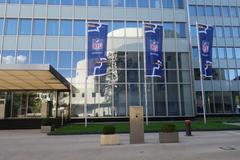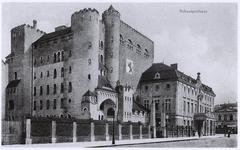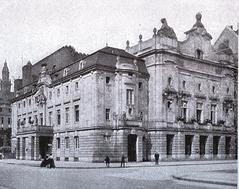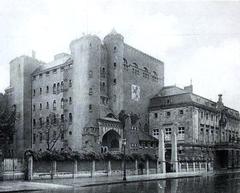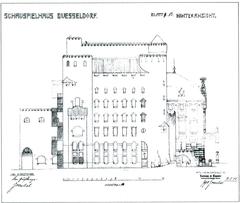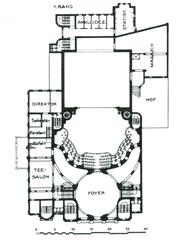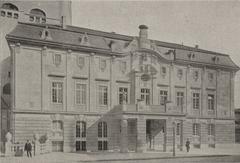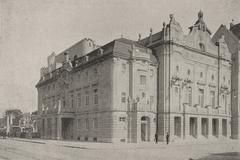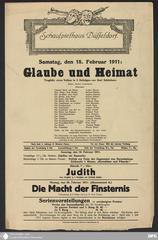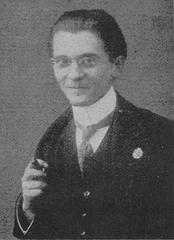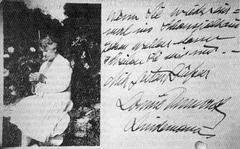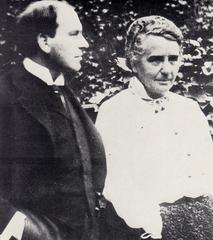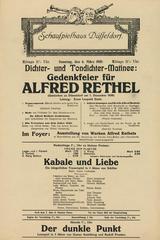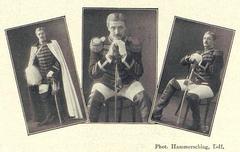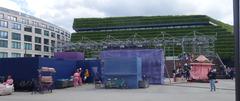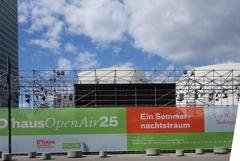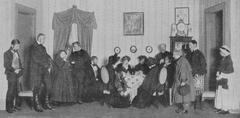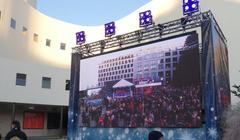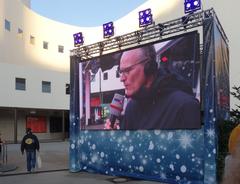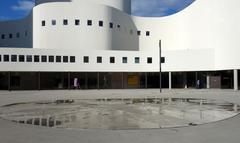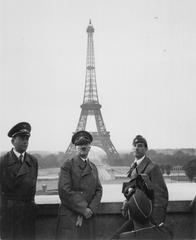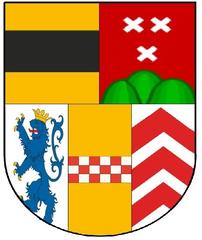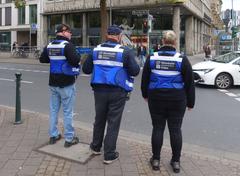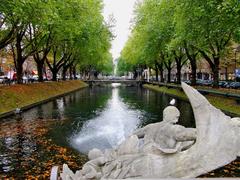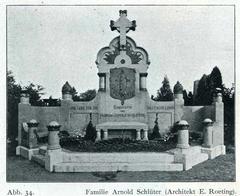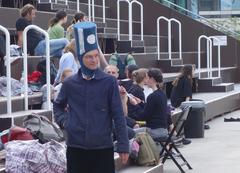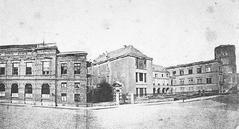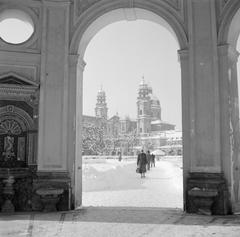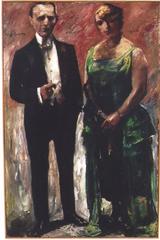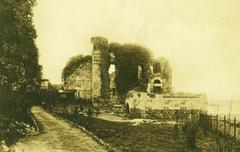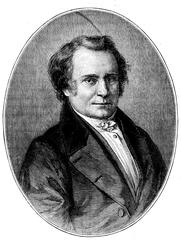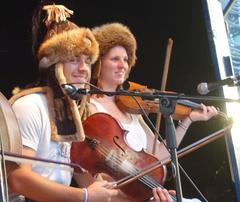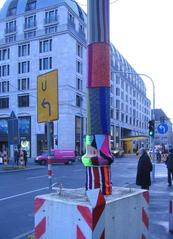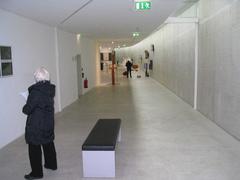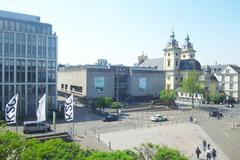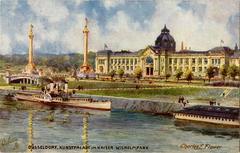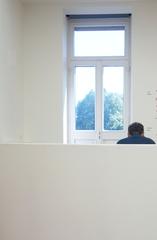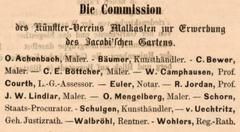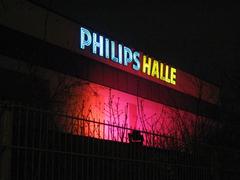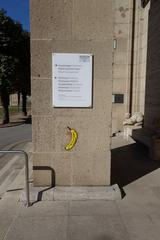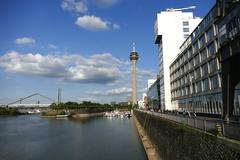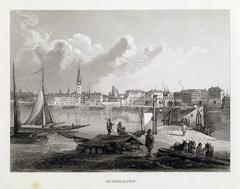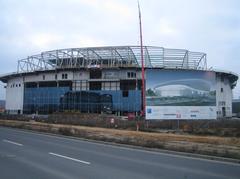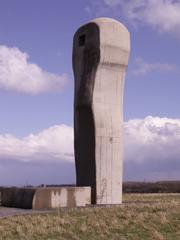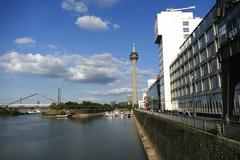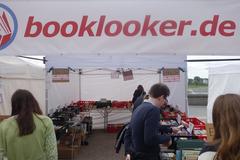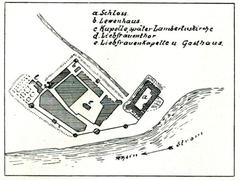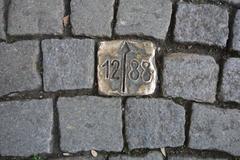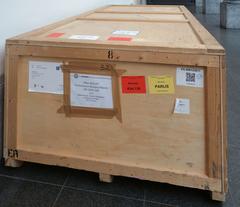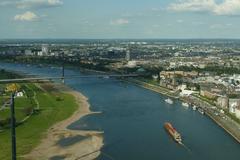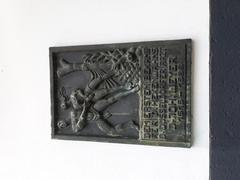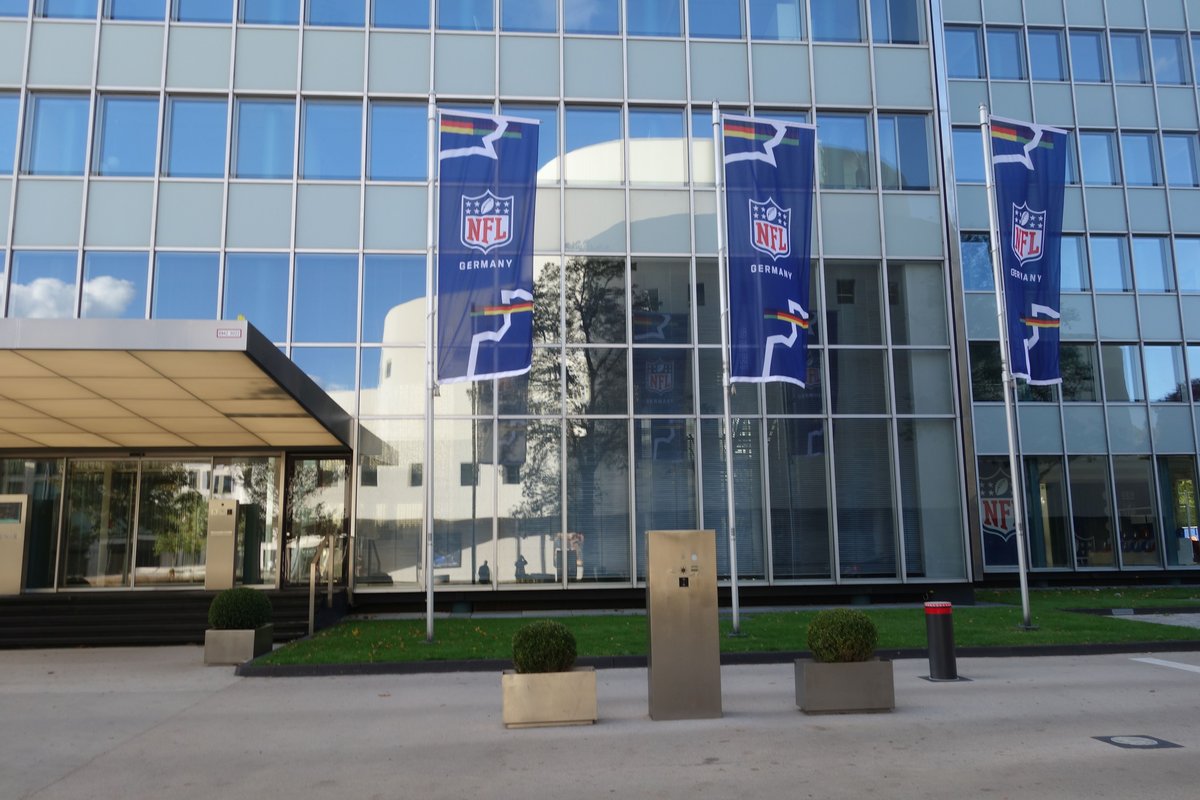
Schauspielhaus Düsseldorf: Visiting Hours, Tickets, and Guide to Düsseldorf Historical Sites
Date: 14/06/2025
Introduction: The Schauspielhaus Düsseldorf—A Cultural and Architectural Icon
Located in the heart of Düsseldorf, the Schauspielhaus Düsseldorf is a symbol of the city’s enduring theatrical tradition and architectural innovation. With its origins dating back to 1747, this institution has witnessed Enlightenment-era beginnings, the pioneering Dumont-Lindemann era, wartime devastation, and post-war rebirth. The current building, designed by Bernhard Pfau and completed in 1970, is celebrated for its organic, flowing architecture and has recently undergone a sensitive renovation to ensure sustainability and accessibility while preserving its historic character.
The Schauspielhaus is more than a theater—it is a vibrant cultural landmark that intertwines artistic excellence, historical significance, and urban integration. Whether attending a performance, joining a guided architectural tour, or simply admiring its striking white façade at Gustaf-Gründgens-Platz, visitors are invited to engage deeply with Düsseldorf’s artistic and civic life.
For the latest visitor information, ticket bookings, and special events, consult the official Schauspielhaus Düsseldorf website. Enhance your visit with virtual tours and interactive maps available online. This guide provides all the essential details to help you appreciate the artistic, architectural, and historical significance of this renowned German theater. (Schauspielhaus Düsseldorf: Visiting Hours, Tickets, and Historical Overview, Düsseldorfer Schauspielhaus: Visiting Hours, Tickets, and Architectural Highlights, Visiting the Düsseldorfer Schauspielhaus: Hours, Tickets, and Cultural Highlights)
Table of Contents
- Early Origins and 18th–19th Century Foundations
- The Dumont-Lindemann Era and Early 20th Century
- Destruction and Post-War Revival
- The Modernist Landmark: 1965–1970 Construction
- Late 20th Century: Recognition and Challenges
- 21st Century Renovation and Preservation
- Visiting Schauspielhaus Düsseldorf: Hours, Tickets, and Accessibility
- Nearby Attractions and Visitor Tips
- Recommended Photographic Spots
- Frequently Asked Questions (FAQ)
- Visual and Interactive Resources
- Internal and External Links
- Plan Your Visit and Stay Connected
Early Origins and 18th–19th Century Foundations
Schauspielhaus Düsseldorf’s story begins in 1747 when Elector Karl Theodor converted the Gießhaus, a former foundry, into a theater. This marked Düsseldorf’s first permanent step into organized theatrical culture, mirroring the Enlightenment’s spirit. In 1818, King Friedrich Wilhelm II gifted the theater to the city, solidifying its civic importance. Artistic leadership began under Josef Derossi, followed by poet Karl Leberecht Immermann (1834), establishing a tradition of innovative programming and engagement with contemporary drama.
The Dumont-Lindemann Era and Early 20th Century
In 1904, Louise Dumont and Gustav Lindemann founded the Düsseldorfer Schauspielhaus as a private theater and acting school. Their vision was to create a leading, modern stage with a focus on actor training and contemporary works. The 1905 theater, designed by Bernhard Sehring, ushered in a golden age, with the Schauspielhaus gaining national acclaim and invitations to major festivals, becoming a hub for cultural life in Düsseldorf and beyond.
Destruction and Post-War Revival
The original building was destroyed during World War II. The company moved post-war performances to the Operettenhaus. In 1951, the Schauspielhaus became an independent city institution. Under Gustaf Gründgens, a former student of Dumont and Lindemann, the theater regained European prominence with daring productions and international collaborations. Karl-Heinz Stroux continued this legacy, cementing the theater’s reputation.
The Modernist Landmark: 1965–1970 Construction
By the late 1950s, the need for a new venue led to an international competition, won by Bernhard Pfau. Construction began in 1965 at Gustaf-Gründgens-Platz. Pfau’s design, with its undulating white façade and organic forms, contrasts the adjacent Dreischeibenhaus. The theater opened in 1970 with Büchner’s “Dantons Tod,” instantly becoming an architectural and cultural landmark.
Late 20th Century: Recognition and Challenges
The theater hosted leading artists and was regularly featured at the Berlin Theater Meeting. In 1998, it was listed as a historic monument. Over time, construction flaws and aging necessitated modernization, especially regarding the façade and roof, to meet new technical and visitor standards.
21st Century Renovation and Preservation
A major renovation began in 2018, led by Ingenhoven Architects and the Department for the Protection of Historic Buildings:
- Façade and Roof Restoration: Unique steel panels were replaced with modern equivalents, preserving Pfau’s vision. Multi-level roofs and the tent roof over the fly tower were rebuilt to current standards.
- Interior Upgrades: Public areas and furnishings were modernized, while the historic character of the auditoria was retained.
- Urban Integration: The surrounding plaza and park connections were reimagined for greater cohesion and accessibility.
Completed in 2020, the project received accolades such as the Deutscher Fassadenpreis 2022.
Visiting Schauspielhaus Düsseldorf: Hours, Tickets, and Accessibility
Visiting Hours:
- Box office: Monday to Saturday, 10:00 AM–6:00 PM; extended on show days.
- Performances: Typically evenings (7:30 PM), with matinees on weekends.
Tickets:
- Buy online via dhaus.de, at the box office, or by phone (+49 (0)211 36 99 11).
- Prices: €15–€50, with discounts for students, seniors, groups, and families.
Accessibility:
- Wheelchair-accessible entrances, elevators, and restrooms.
- Reserved accessible seating and assistive listening devices upon request.
- Assistance dogs are welcome; selected performances have English surtitles or subtitles.
Getting There:
- U-Bahn: “Heinrich-Heine-Allee” or “Schadowstraße,” 5-minute walk.
- Parking: Nearby garages (“Kö-Bogen,” “Schadow Arkaden”).
Nearby Attractions and Visitor Tips
- Hofgarten Park: Adjacent historic park for a relaxing stroll.
- Königsallee: Luxury shopping boulevard with a scenic canal (Life of Brit).
- Museum Kunstpalast: Art museum with family workshops (World Wild Schooling).
- Altstadt (Old Town): Bustling historic district with cafes and breweries.
- Dreischeibenhaus: Iconic skyscraper next to the theater.
Visitor Tips:
- Book tickets in advance, especially for popular shows or accessibility needs.
- Arrive 30 minutes early to enjoy the architecture, collect tickets, and use the cloakroom.
- Most performances are in German; ask about English surtitles.
- Family-friendly programming and discounted tickets are available.
Recommended Photographic Spots
Capture the flowing white façade and sweeping curves from Gustaf-Gründgens-Platz. The juxtaposition with the Dreischeibenhaus offers excellent urban photography opportunities. Interior shots (where permitted) highlight the dramatic lobby and auditorium design.
Frequently Asked Questions (FAQ)
Q: Can I visit without seeing a performance?
A: Guided tours are occasionally available—check the official website for dates.
Q: How do I buy tickets?
A: Online, by phone, or at the box office. Advance purchase is recommended.
Q: Is the theater accessible?
A: Yes, with full wheelchair access and services for visitors with disabilities.
Q: Are English surtitles available?
A: Some performances offer surtitles or programs in English.
Q: Are concessions or dining options available?
A: Yes, there is a café and bar serving refreshments before and during intermissions.
Visual and Interactive Resources
Explore virtual tours and interactive maps to preview the venue and plan your visit. High-quality images with descriptive alt text are available for accessibility and trip planning.
Internal and External Links
- Official Schauspielhaus Düsseldorf Website
- Düsseldorfer Schauspielhaus: Tickets, Visiting Hours, and Cultural Highlights
- Heinrich-Heine-Universität Düsseldorf: Living in Düsseldorf—Theatre Guide
- Kulturportal Düsseldorf: Theater Calendar
Plan Your Visit and Stay Connected
Make the most of your visit by downloading the Audiala app for curated tours, latest schedules, and ticket offers. Follow Schauspielhaus Düsseldorf on social media for updates, event news, and behind-the-scenes content. For official information and bookings, always refer to the theater’s website.
Summary and Travel Tips
The Schauspielhaus Düsseldorf is a must-visit destination for anyone interested in theater, architecture, or cultural history. Its legacy spans centuries, blending tradition and innovation. The central location offers seamless access to other major Düsseldorf attractions, making it an ideal cornerstone for any cultural itinerary. Book tickets in advance, check accessibility options, and take time to explore the neighboring Hofgarten, Königsallee, and Altstadt for a well-rounded experience.
Experience firsthand why the Schauspielhaus remains a beacon of German theater and a cornerstone of Düsseldorf’s cultural life. (Schauspielhaus Düsseldorf official website, Düsseldorfer Schauspielhaus: Visiting Hours, Tickets, and Architectural Highlights, Visiting the Düsseldorfer Schauspielhaus: Hours, Tickets, and Cultural Highlights)
References
- Schauspielhaus Düsseldorf: Visiting Hours, Tickets, and Historical Overview of Düsseldorf’s Premier Theater, 2025
- Düsseldorfer Schauspielhaus: Visiting Hours, Tickets, and Architectural Highlights in Düsseldorf, 2025
- Visiting the Düsseldorfer Schauspielhaus: Hours, Tickets, and Cultural Highlights, 2025, Heinrich-Heine-Universität Düsseldorf
- Visitor Experience and Practical Information: Schauspielhaus Düsseldorf Visiting Hours, Tickets, and More, 2025
